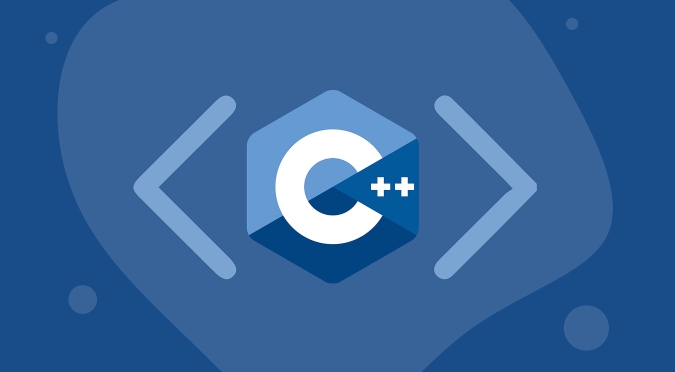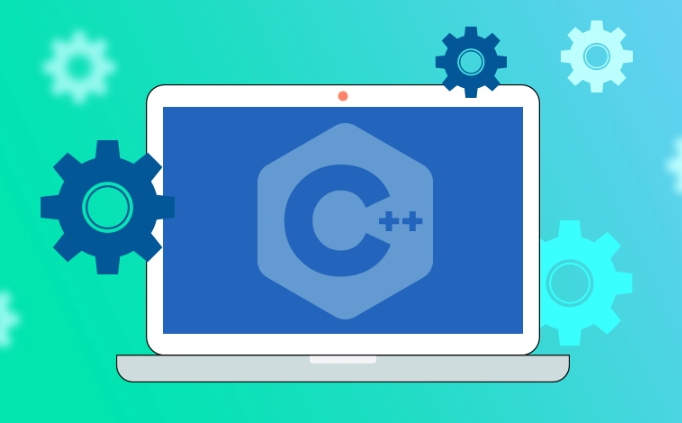What is the basic structure of a C program?
Jun 29, 2025 am 01:22 AMA typical C program structure contains four basic components. 1. The header file contains: using #include to introduce the required library functions. The system header file is wrapped in angle brackets, and the custom header file is wrapped in double quotes. It should only contain the header files that are really needed to improve compilation efficiency and avoid conflicts; 2. Namespace declaration: Usually using namespace std; simplify standard library calls, but in large projects, it is recommended to introduce only the required part or explicitly add namespace prefix to avoid name conflicts; 3. Main function main(): Each C program must have a main function as the program entrance, the return type is int, and usually return 0 means that the program runs successfully, and it can also be used to pass parameters with parameters on the command line; 4. Variable definition and logic processing: Define variables within the main function and write the program core logic. Variables should be defined before use, use meaningful names, and try to avoid global variables. Mastering these structures helps write clearer and maintainable code. Beginners can write according to the template first and gradually expand the functions.

A typical C program structure is not actually complicated, but understanding it clearly helps you write clearer and maintainable code. Let's take a look at the most basic components.

1.Include Headers
At the beginning of the program, you usually see statements like #include <iostream></iostream> . These are the functions that tell the compiler which libraries we want to use. For example, <iostream></iostream> provides input and output functions, <vector></vector> provides support for dynamic arrays.

- Common system header files are wrapped in angle brackets
- Custom header files are usually in double quotes
"", such as#include "myheader.h"
Some newbies may ignore this or add a bunch of header files at will, which should only include what they really need, which can improve compilation efficiency and avoid potential conflicts.
2. Namespace declaration (Namespace)
Most basic programs use using namespace std; This sentence means using content in the standard namespace, so that you don't need to write std::cout or std::endl every time you call a standard library function or object.

However, in large projects, it is not recommended to use the global namespace directly , because it is easy to cause name conflicts. A safer approach is:
- Only the required parts are introduced:
using std::cout; - Or add the namespace prefix when using:
std::cout
3. Main function main()
Each C program must have a main() function, which is the entry point for program execution. The basic form is as follows:
int main() {
// The program logic is written here return 0;
}-
intrepresents the return type, which is usually used to report to the operating system whether the program runs successfully (0 indicates success) -
return 0;Don't omit it, although modern compilers will automatically fill it in, it is more standardized to write it explicitly
Some variants will take parameters, such as int main(int argc, char* argv[]) , which is suitable for cases where command line arguments are required.
4. Variable definition and logical processing
Inside the main() function, you will see the definition of the variable and a series of operation statements. This part is the core logic of the program.
for example:
int age = 25; std::cout << "Your age is " << age << std::endl;
A few points to note:
- Variables are best defined before use, especially in earlier versions of C
- Use meaningful variable names, such as
studentNameinstead ofx - Try to avoid global variables unless there are special needs
Basically that's it. The structure of the C program seems simple, but only after the details are processed can high-quality code be written. When you first learn, you can write according to the template first, and then slowly expand other functions, such as function encapsulation, class design, etc.
The above is the detailed content of What is the basic structure of a C program?. For more information, please follow other related articles on the PHP Chinese website!

Hot AI Tools

Undress AI Tool
Undress images for free

Undresser.AI Undress
AI-powered app for creating realistic nude photos

AI Clothes Remover
Online AI tool for removing clothes from photos.

Clothoff.io
AI clothes remover

Video Face Swap
Swap faces in any video effortlessly with our completely free AI face swap tool!

Hot Article

Hot Tools

Notepad++7.3.1
Easy-to-use and free code editor

SublimeText3 Chinese version
Chinese version, very easy to use

Zend Studio 13.0.1
Powerful PHP integrated development environment

Dreamweaver CS6
Visual web development tools

SublimeText3 Mac version
God-level code editing software (SublimeText3)
 Using std::chrono in C
Jul 15, 2025 am 01:30 AM
Using std::chrono in C
Jul 15, 2025 am 01:30 AM
std::chrono is used in C to process time, including obtaining the current time, measuring execution time, operation time point and duration, and formatting analysis time. 1. Use std::chrono::system_clock::now() to obtain the current time, which can be converted into a readable string, but the system clock may not be monotonous; 2. Use std::chrono::steady_clock to measure the execution time to ensure monotony, and convert it into milliseconds, seconds and other units through duration_cast; 3. Time point (time_point) and duration (duration) can be interoperable, but attention should be paid to unit compatibility and clock epoch (epoch)
 How to get a stack trace in C ?
Jul 07, 2025 am 01:41 AM
How to get a stack trace in C ?
Jul 07, 2025 am 01:41 AM
There are mainly the following methods to obtain stack traces in C: 1. Use backtrace and backtrace_symbols functions on Linux platform. By including obtaining the call stack and printing symbol information, the -rdynamic parameter needs to be added when compiling; 2. Use CaptureStackBackTrace function on Windows platform, and you need to link DbgHelp.lib and rely on PDB file to parse the function name; 3. Use third-party libraries such as GoogleBreakpad or Boost.Stacktrace to cross-platform and simplify stack capture operations; 4. In exception handling, combine the above methods to automatically output stack information in catch blocks
 What is a POD (Plain Old Data) type in C ?
Jul 12, 2025 am 02:15 AM
What is a POD (Plain Old Data) type in C ?
Jul 12, 2025 am 02:15 AM
In C, the POD (PlainOldData) type refers to a type with a simple structure and compatible with C language data processing. It needs to meet two conditions: it has ordinary copy semantics, which can be copied by memcpy; it has a standard layout and the memory structure is predictable. Specific requirements include: all non-static members are public, no user-defined constructors or destructors, no virtual functions or base classes, and all non-static members themselves are PODs. For example structPoint{intx;inty;} is POD. Its uses include binary I/O, C interoperability, performance optimization, etc. You can check whether the type is POD through std::is_pod, but it is recommended to use std::is_trivia after C 11.
 How to call Python from C ?
Jul 08, 2025 am 12:40 AM
How to call Python from C ?
Jul 08, 2025 am 12:40 AM
To call Python code in C, you must first initialize the interpreter, and then you can achieve interaction by executing strings, files, or calling specific functions. 1. Initialize the interpreter with Py_Initialize() and close it with Py_Finalize(); 2. Execute string code or PyRun_SimpleFile with PyRun_SimpleFile; 3. Import modules through PyImport_ImportModule, get the function through PyObject_GetAttrString, construct parameters of Py_BuildValue, call the function and process return
 How to pass a function as a parameter in C ?
Jul 12, 2025 am 01:34 AM
How to pass a function as a parameter in C ?
Jul 12, 2025 am 01:34 AM
In C, there are three main ways to pass functions as parameters: using function pointers, std::function and Lambda expressions, and template generics. 1. Function pointers are the most basic method, suitable for simple scenarios or C interface compatible, but poor readability; 2. Std::function combined with Lambda expressions is a recommended method in modern C, supporting a variety of callable objects and being type-safe; 3. Template generic methods are the most flexible, suitable for library code or general logic, but may increase the compilation time and code volume. Lambdas that capture the context must be passed through std::function or template and cannot be converted directly into function pointers.
 What is a null pointer in C ?
Jul 09, 2025 am 02:38 AM
What is a null pointer in C ?
Jul 09, 2025 am 02:38 AM
AnullpointerinC isaspecialvalueindicatingthatapointerdoesnotpointtoanyvalidmemorylocation,anditisusedtosafelymanageandcheckpointersbeforedereferencing.1.BeforeC 11,0orNULLwasused,butnownullptrispreferredforclarityandtypesafety.2.Usingnullpointershe
 How does std::move work in C ?
Jul 07, 2025 am 01:27 AM
How does std::move work in C ?
Jul 07, 2025 am 01:27 AM
std::move does not actually move anything, it just converts the object to an rvalue reference, telling the compiler that the object can be used for a move operation. For example, when string assignment, if the class supports moving semantics, the target object can take over the source object resource without copying. Should be used in scenarios where resources need to be transferred and performance-sensitive, such as returning local objects, inserting containers, or exchanging ownership. However, it should not be abused, because it will degenerate into a copy without a moving structure, and the original object status is not specified after the movement. Appropriate use when passing or returning an object can avoid unnecessary copies, but if the function returns a local variable, RVO optimization may already occur, adding std::move may affect the optimization. Prone to errors include misuse on objects that still need to be used, unnecessary movements, and non-movable types
 What is an abstract class in C ?
Jul 11, 2025 am 12:29 AM
What is an abstract class in C ?
Jul 11, 2025 am 12:29 AM
The key to an abstract class is that it contains at least one pure virtual function. When a pure virtual function is declared in the class (such as virtualvoiddoSomething()=0;), the class becomes an abstract class and cannot directly instantiate the object, but polymorphism can be realized through pointers or references; if the derived class does not implement all pure virtual functions, it will also remain an abstract class. Abstract classes are often used to define interfaces or shared behaviors, such as designing Shape classes in drawing applications and implementing the draw() method by derived classes such as Circle and Rectangle. Scenarios using abstract classes include: designing base classes that should not be instantiated directly, forcing multiple related classes to follow a unified interface, providing default behavior, and requiring subclasses to supplement details. In addition, C






